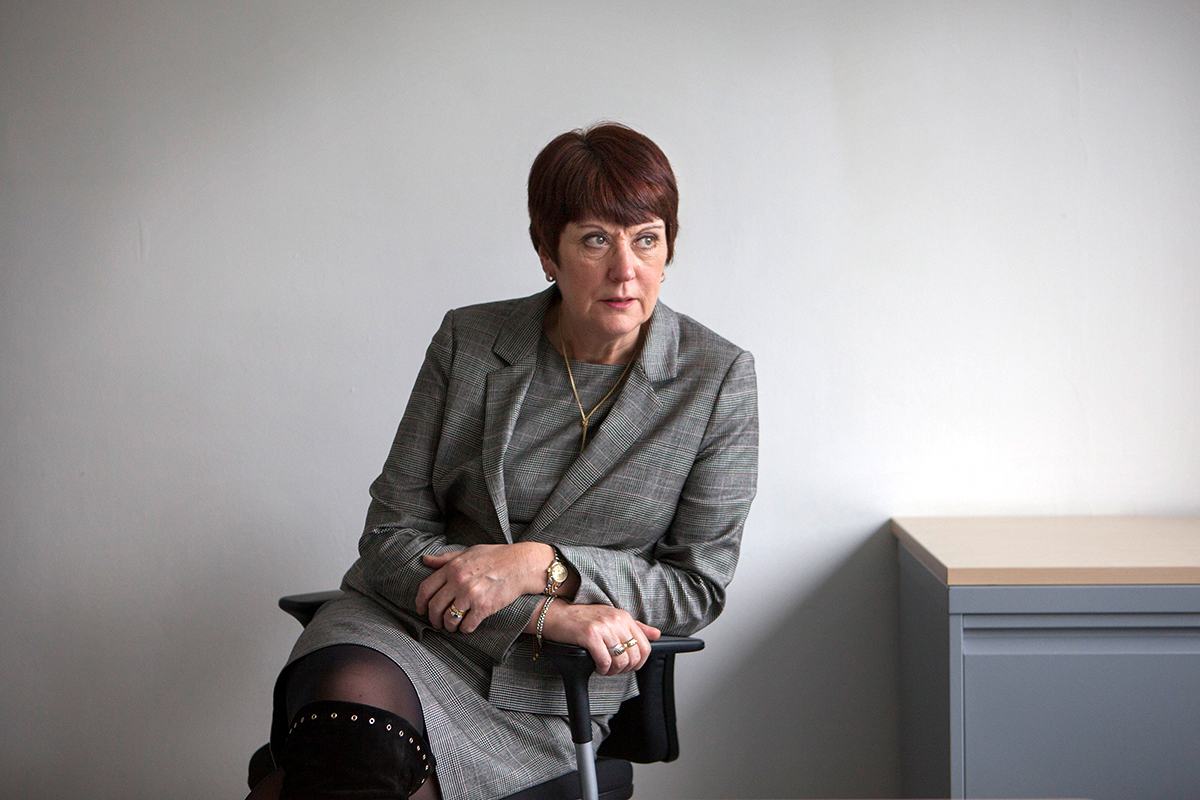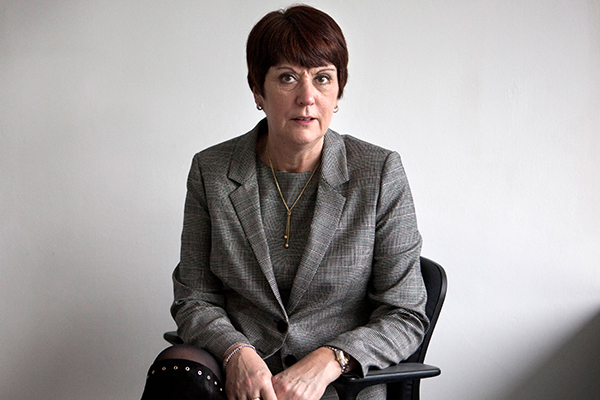You are viewing 1 of your 1 free articles
 Adrian Dobson
Adrian DobsonWe need minimum prescriptive requirements in building regulations
As the Hackitt Review on building regulations progresses, Adrian Dobson argues that we need prescription on external wall construction, sprinklers and means of escape
The interim report of the Independent Review of Building Regulations and Fire Safety led by Dame Judith Hackitt has produced a clear analysis of a regulatory system that isn’t fit for purpose, and a construction industry that needs serious reform.
There are some excellent proposals for systemic improvements.
These include better definition and allocation of roles and responsibilities within the building and fire regulatory regime, with defined duty holders.
“The interim Hackitt Review report outlines the need to raise levels of competence and accreditation of those involved in design, construction and maintenance of buildings.”
This could be based on an extension of the duties of principal designer and principal contractor under the Construction Design and Management Regulations, so that they secure the life safety of all end users, as well as those who construct and maintain buildings.
Dame Judith has called for increased independent oversight of the quality of construction work, and stronger compliance with and enforcement of building control.
The Royal Institute of British Architects (RIBA) would certainly like to see clients be more willing to employ clerks of works and inspecting architects to keep an independent check on build quality.
The interim report outlines the need to raise levels of competence and accreditation of those involved in design, construction and maintenance of buildings.
Architecture is an independently regulated profession, with high standards of professional education and continued professional development (CPD) requirements, and a code of conduct which requires competence proportionate to work undertaken.
“RIBA has serious concerns about Dame Judith’s suggestion that fire safety in ‘higher risk’ or ‘complex’ buildings be addressed through a risk-based system focused on performance requirements.”
RIBA will be seeking to further strengthen the life safety aspects of the architectural curriculum and our CPD requirements of our chartered members.
However, RIBA has serious concerns about Dame Judith’s suggestion that fire safety in ‘higher risk’ or ‘complex’ buildings be addressed through a risk-based system focused on performance requirements.
We are not aware of any successful building control system internationally that does not have a significant prescriptive element.
Our current regulatory, testing and compliance regime has produced a complex ecosystem of contradictory guidance and conflicted interests, and in the process we seem to have lost sight of the basics of fire-safe design.
While fire engineering on high-specification, high-budget projects with experienced client bodies can support innovation in design, on more typical projects it is too often a method of subverting core principles that have been developed over generations since the Great Fire of London.
“We are not aware of any successful building control system internationally that does not have a significant prescriptive element.”
International observers look at our regulatory regime and industry practices askance. The so-called desktop studies for external wall performance have proven fatally flawed.
RIBA is calling for a baseline level of prescriptive requirements in relation to matters such as external wall construction, sprinklers and means of escape.
Central to this is an immediate and comprehensive review and revision of Approved Document B – the core guidance that the multi-faceted construction industry relies upon.
At a recent fire safety breakfast briefing held at RIBA we highlighted these baseline prescriptive requirements, which include:
- External wall construction for existing or new buildings with a storey 18m or more above ground to be comprised of non-combustible (European class A1) materials only
- In all new multiple occupancy residential buildings a requirement for at least two staircases, offering alternative means of escape, where the top floor is more than 11m above ground level or the top floor is more than three storeys above the ground-level storey
- Retrofitting of sprinklers/automatic fire suppression systems to existing residential buildings above 18m from ground level in height as ‘consequential improvements’ where a building is subject to ‘material alterations’
- Mandatory requirement for sprinklers/automatic fire suppression systems in all new and converted residential buildings, as already required in Wales
There wasn’t a great deal of dissent in the room; it seems it is hard to argue with what sounds like common sense.
“Simple minimum regulation and guidance that gets the basics right is needed from the government.”
RIBA’s nominated expert wasn’t accepted onto the crucial working group that is looking at regulations and guidance in stage two of the independent review, but we will be keeping a close eye from the sidelines on how that work pans out.
Simple minimum regulation and guidance that gets the basics right is needed from the government.
It will then be up to the construction industry to live up to its side of the bargain and raise its awareness, competency and commitment to life safety as the core ethical principle that must underpin every building project.
Adrian Dobson, executive director, Royal Institute of British Architects
The Hackitt Review
Photo: Tom Pilston/Eyevine
Dame Judith Hackitt’s (above) interim report on building safety, released in December 2017, was scathing about some of the industry’s practices.
Although the full report is not due to be published until later this year, the former Health and Safety Executive chair has already highlighted a culture of cost-cutting and is likely to call for a radical overhaul of current regulations in an interim report.
Dame Hackitt’s key recommendations and conclusions include:
- A call for the simplification of building regulations and guidelines to prevent misapplication
- Clarification of roles and responsibilities in the construction industry
- Giving those who commission, design and construct buildings primary responsibility that they are fit for purpose
- Greater scope for residents to raise concerns
- A formal accreditation system for anyone involved in fire prevention on high-rise blocks
- A stronger enforcement regime backed up with powerful sanctions
What are desktop studies, and why are people concerned?
Building regulations say cladding systems which contain combustible insulation must be shown to meet specific standards based on “full scale test data”
A ‘desktop study’ is a means of making an assumption about whether or not a cladding system would meet these standards without actually testing it.
It involves using data from previous tests of the materials in different combinations to make assumptions about how it would perform in a test.
This is not specifically provided for in the current guide to building regulations, but the government believes they are loosely drafted to an extent which makes it permissible. It plans to redraft the guidance to include specific rules on the use of desktop studies for the first time.
The alternatives to a desktop study are full scale testing or not using combustible materials.
People are concerned about the process because it is based on assumption: at least one system cleared through a desktop study has failed a full scale test.
This is important for fire safety because mistakes may mean unsafe cladding systems being cleared for use on tall buildings.
Never Again campaign
Inside Housing has launched a campaign to improve fire safety following the Grenfell Tower fire
Never Again: campaign asks
Inside Housing is calling for immediate action to implement the learning from the Lakanal House fire, and a commitment to act – without delay – on learning from the Grenfell Tower tragedy as it becomes available.
LANDLORDS
- Take immediate action to check cladding and external panels on tower blocks and take prompt, appropriate action to remedy any problems
- Update risk assessments using an appropriate, qualified expert.
- Commit to renewing assessments annually and after major repair or cladding work is carried out
- Review and update evacuation policies and ‘stay put’ advice in light of risk assessments, and communicate clearly to residents
GOVERNMENT
- Provide urgent advice on the installation and upkeep of external insulation
- Update and clarify building regulations immediately – with a commitment to update if additional learning emerges at a later date from the Grenfell inquiry
- Fund the retrofitting of sprinkler systems in all tower blocks across the UK (except where there are specific structural reasons not to do so)
We will submit evidence from our research to the Grenfell public inquiry.
The inquiry should look at why opportunities to implement learning that could have prevented the fire were missed, in order to ensure similar opportunities are acted on in the future.
FULL LIST: HACKITT REVIEW WORKING GROUPS
Working group 1: Golden Thread
Chairs:
Ben Stayte and Hannah Brook
Members:
National Fire Chiefs Council
Local Authority Building Control
Construction Products Association
UIL
National Housing Federation
Health and Safety Executive
Institution of Fire Engineers
Working group 2: Regulations and Guidance
Chair:
Peter Caplehorn, Construction Products Association
Members:
National Fire Chiefs Council
Local Authority Building Council
Fire Industry Association
Building Research Establishment
Health and Safety Executive
Build UK
Chartered Institute of Building Services Engineers
Other groups
Working Group 1: Construction and Design
Chair:
Rachel White, Institute for Civil Engineers
Members:
Association of Consultant Approved Inspectors
Build UK
Local Authority Building Control
National Fire Chiefs Council
Institution of Fire Engineers
Royal Institute of British Architects
Health and Safety Executive
Construction Leadership Council
National House Building Council
Royal Institution of Chartered Surveyors
Working Group 2: Procurement
Chair:
Paul Nash, Chartered Institute of Building
Members:
Telford Homes
Kier Living
Construction Industry Council
Local Government Association
Home Builders Federation
Working Group 2: Occupation and Maintenance
Chair:
Nick Coombe, National Fire Chiefs Council
Members:
Association of Residential Managing Agents
National Fire Chiefs Council
British Institute of Facilities Management
Royal Institution of Chartered Surveyors
Health and Safety Executive
Leasehold Advisory Service
Local Government Association
Association of British Insurers
Working Group 4: Competence
Chair:
Graham Watts, Construction Industry Council
Members:
Royal Institution of Chartered Surveyors
Construction Industry Council Approved Inspector Register
Engineering Council
Fire Industry Association
Local Authority Building Control
Royal Institute of British Architects
National Fire Chiefs Council
Fire Protection Association
University of Edinburgh, School of Engineering
Institution of Fire Engineers
Working Group 5: Residents’ Voice
Chair:
Darren Hartley, TAROE
Members
Association of Residential Managing Agents
British Property Federation
Camden Leaseholders’ Forum, nominated by LEASE
Confederation of Co-operative Housing
Fire Industry Association
National Federation of Tenant Management Organisations
Optivo Homes, nominated by National Housing Federation
Shelter
Tenant Participation Advisory Service
Working Group 6: Quality Assurance and Products
Chair:
Dr Debbie Smith, Building Research Establishment
Members
Construction Products Association
British Standards Institution
United Kingdom Accreditation Service
British Board of Agrement
Fire Protection Association
Fire Industry Association
Centre for Fire and Hazards Science, University of Central Lancashire
National Fire Chiefs Council
Institution of Fire Engineers













